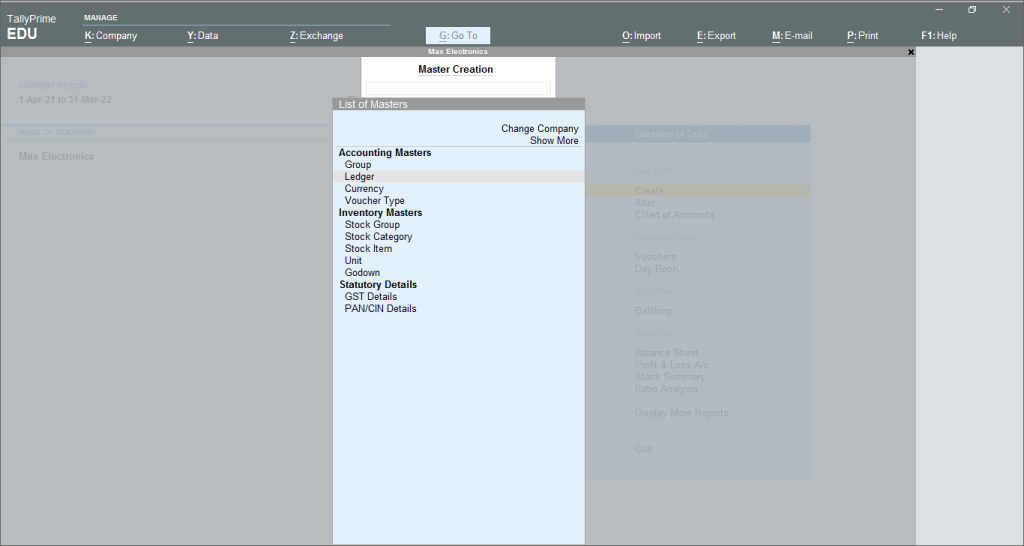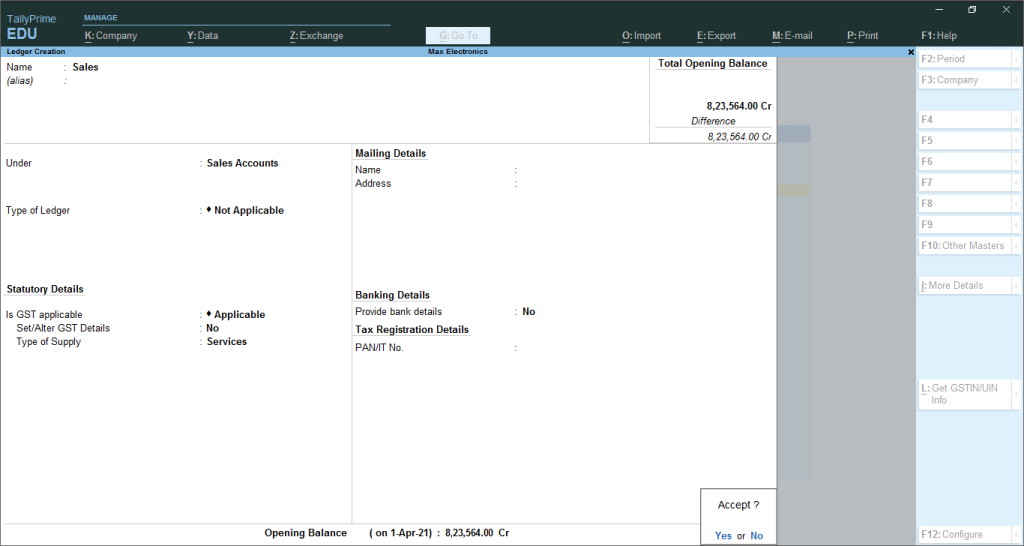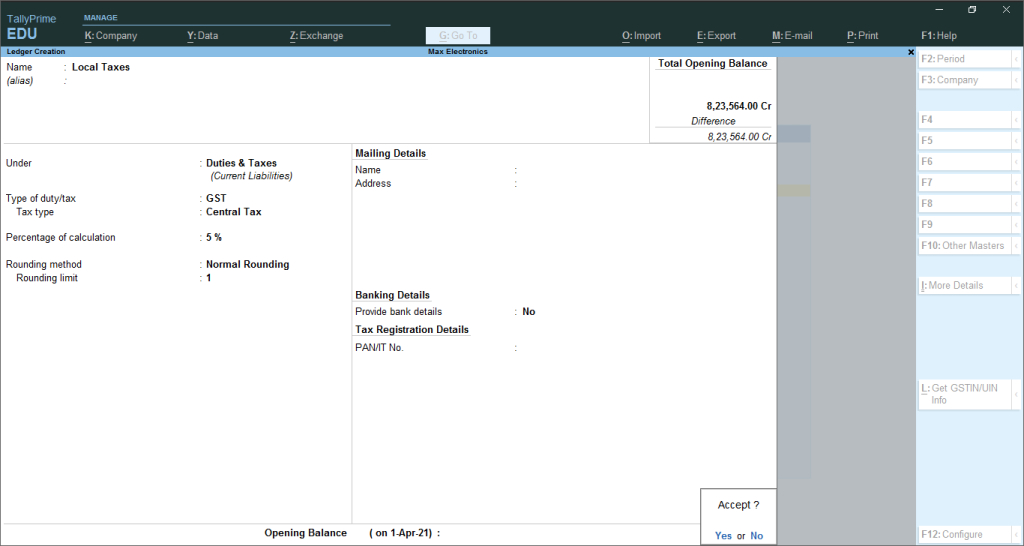How to create Ledgers in Tally Prime? After creating a company in Tally, the next step is to create a Groups and Ledgers account. A ledger is an actual account used to identify business transactions and is used in all accounting vouchers. For example, purchases, payments, sales, receipts, and other account heads are ledger accounts. Without a ledger, you cannot record any transaction.
All ledger accounts have to be classified under groups. These groups and ledgers are classified into profit and loss or balance sheets. There are two already set ledgers in TallyPrime: Cash ledger and Profit and loss account. In this article, we have explained various ways to create Ledgers in Tally Prime.
Quick Links
Difference between Cash and Profit and loss ledger account
| Basis | Cash Ledger | Profit and Loss Ledger |
| 1. Groups | The cash ledger is grouped under cash-in-hand. | The profit and loss account ledger is grouped under primary. |
| 2. Opening Balance | One can enter the opening balance on the day the books begin. | The previous year’s profit or loss is entered as the opening balance of the ledger. The balance entered is the opening profit/loss. It is shown in the balance sheet as the opening of the profit and loss account in the liabilities. |
| 3. Alter and Delete | This ledger can be altered and deleted. | This ledger can not be deleted, but it can be modified. |
Create Ledgers in Tally Prime:
- One can use multiple ways to create Ledgers in Tally Prime.
- Tally Prime has new features that allow the creation of the required ledgers while recording the transactions for the first time.
- The second method to create a ledger is from the master creation, Chart of Accounts.
- One can also use the multi-ledger creation feature option or import using an XML file.
- Another exceptional feature of Tally Prime is it brings ledgers with missing details under the exception frame. One can alter and update the details later.
Create Ledgers One by One
- Go to Gateway of Tally and Create and type or select Ledger and press Enter.
- Alternatively, press Alt+G (Go To) and Create Master and type or select Ledger and press Enter.

- Enter the Details: Write the Name of the ledger account. Duplicate names are not allowed. For example- Purchases or Sales.
- Enter the Alias name: Alias is the nickname of the ledger account. It is not necessary. You can access the ledgers using their official name or the alias name.
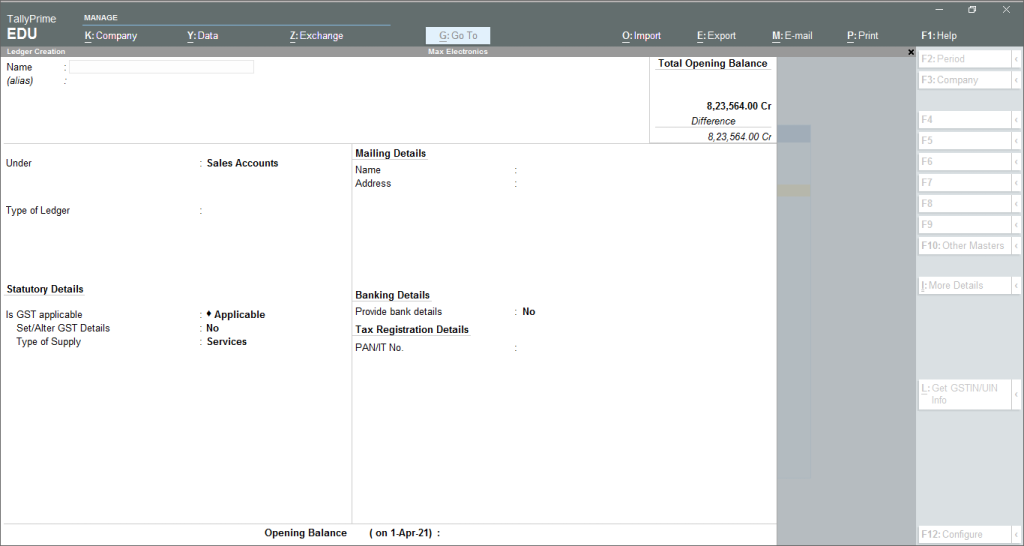
- Select Group Category: You need to select the group from the List of Groups. Press ALT+ C to create a new group during this step. For example, Sales will come under a Sales Account or Central Tax under Duties and Taxes ( Current Liabilities).
- Click F12, and change GST, Bank, and other details, if needed. Click and f11, Inventory settings if you maintain accounts with inventory. Change Inventory values are affected to Yes.
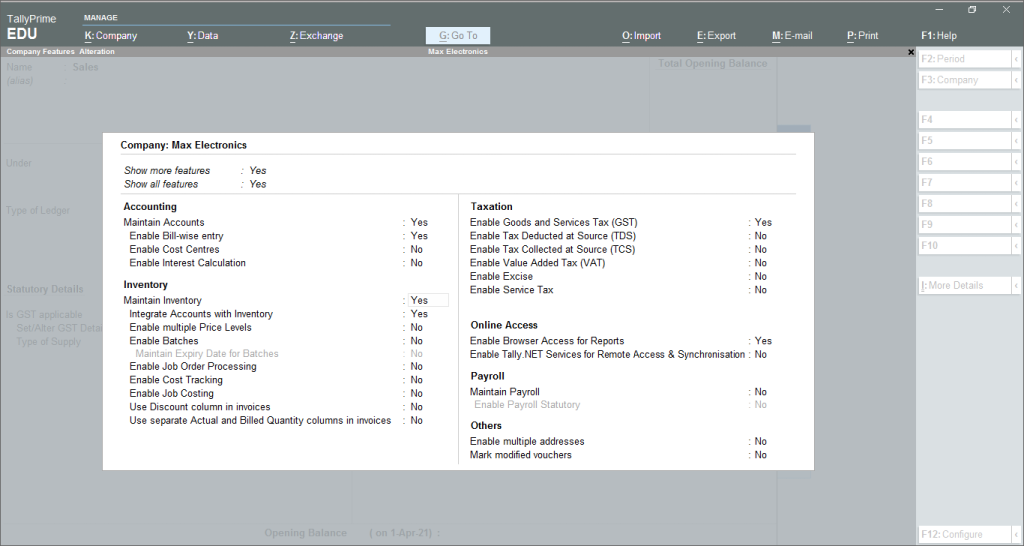
- Opening Balance: Entering the opening balance is needed when the ledger account is an asset or a liability. Also, if a ledger has an opening balance as of the beginning of books, the amount comes under this section.
- Accept the Screen, as always you can use shortcut and Pressandgt; Alt+A to save.
You have successfully understood how to Create Ledgers in Tally Prime. Must Read Opening Balance in Tally.
Ledger Creation from Transaction or reporting
One can create Ledgers in Tally Prime during Voucher entry from all the voucher types available in TallyPrime.
- From the Voucher Creation/Alteration screen, press Alt+C. from the ledger field.
- Ledger Creation will display and create the ledger and save the screen.
Current Liabilities and Current Assets Ledgers
For creating Ledger Accounts for Outstanding Liabilities, Statutory Liabilities, and other minor liabilities, users can directly make it under Current Liabilities. Assets can be classified as Current assets and Fixed assets.
- To create fixed assets ledgers in tally, follow the same steps as mentioned above. However, the groups will change according to the Ledger account.
- For example, Furniture and fixtures will come under Fixed assets
Tax Ledger
Tax Ledgers are created under the Duties and Taxes group. All Tax ledgers contain all tax accounts like GST, VAT, CENVAT, Excise, Sales, and other trade taxes and total liability. You may also like How to Pass Payment Entry in Tally Prime.
- To create different Tax ledgers, follow the steps mentioned above.
- However, the type of Duty tax is based on the statutory compliance of the company. Select the type of Tax or Clickandgt; F11 and enable more Type of Duty/Tax options.
- Choose tax types such as Central tax, Cess, Integrated tax, etc. according to your company’s needs.
- Select the Percentage of Calculation, you want the rate of tax. For example, 5%, 10%, 12.5% etc.
- After entering Percentage, choose the appropriate Rounding method to calculate the Tax/Duty. For example. if the Duty value is 125.55 and the rounding Limit is 1, then:
- Downward rounding will show as 125.
- Normal rounding will show as 126.
- Upward rounding will show 126
- Provide Bank Details, if required.
- Now, click enter and save the details or Clickandgt; Alt+A.

